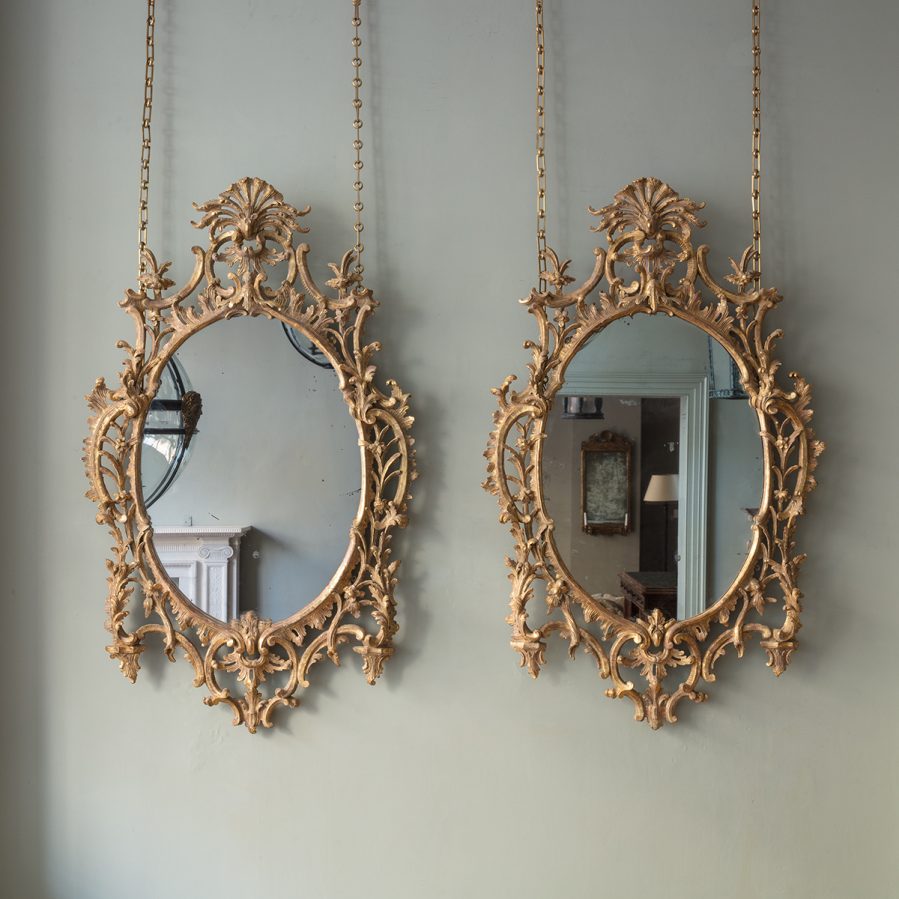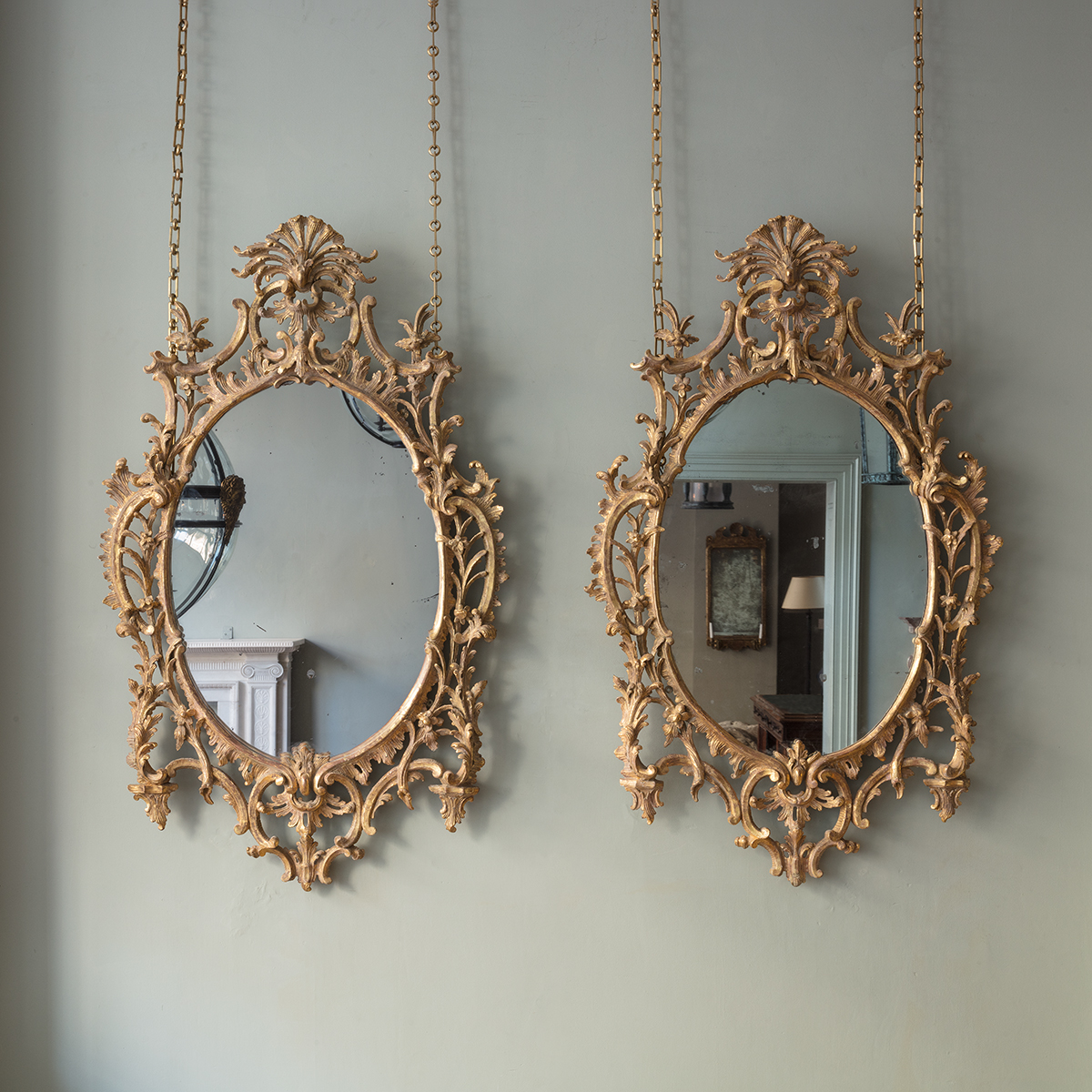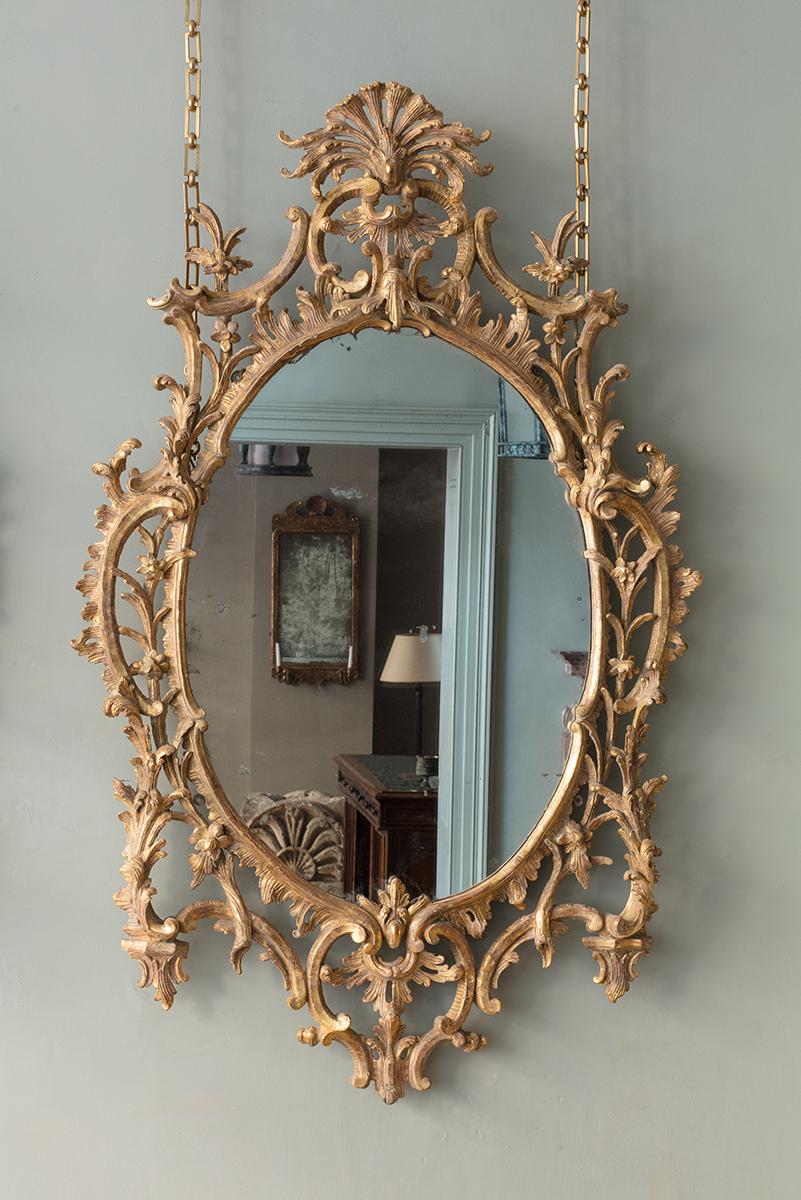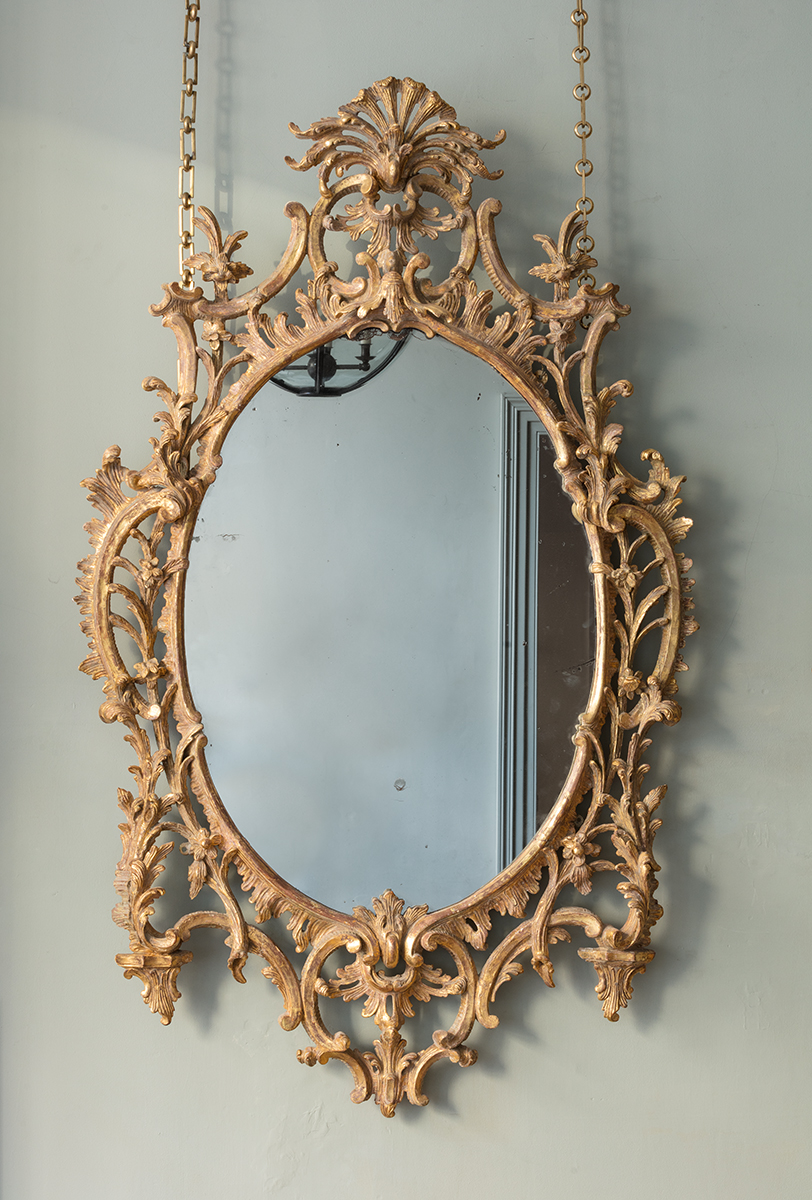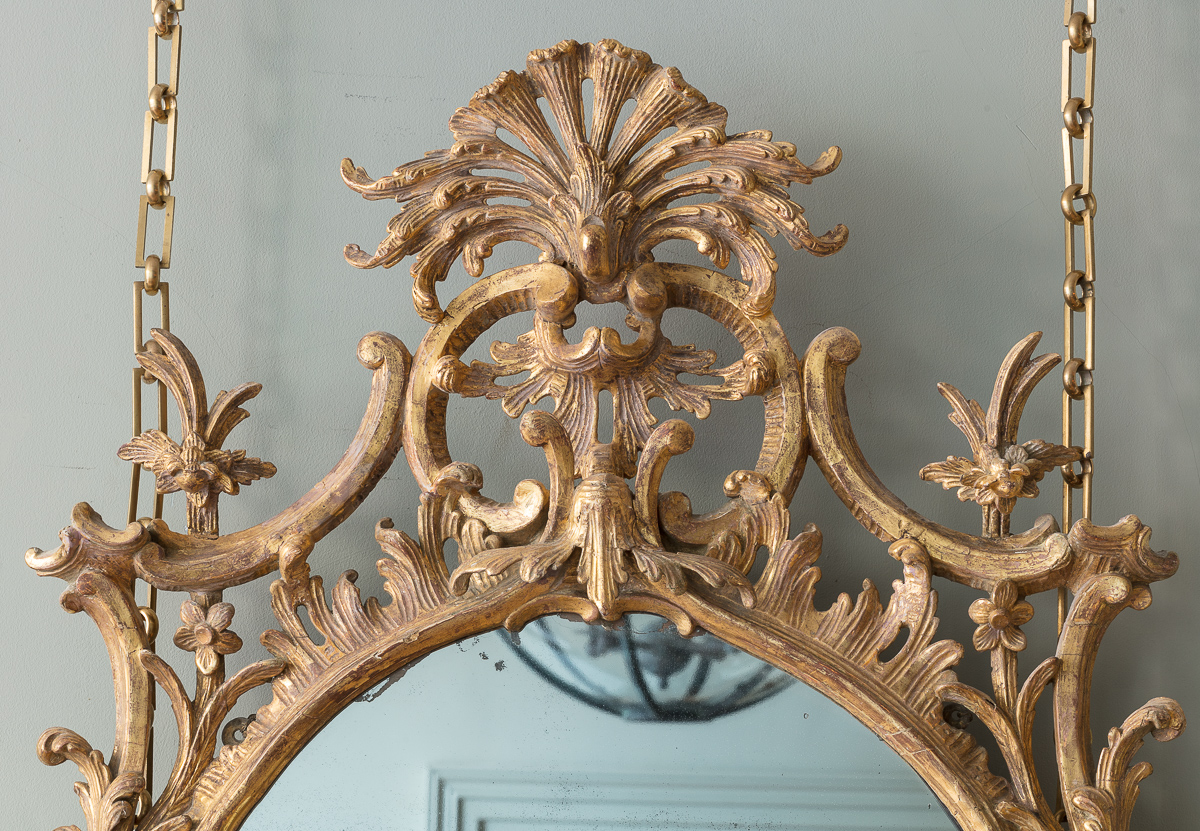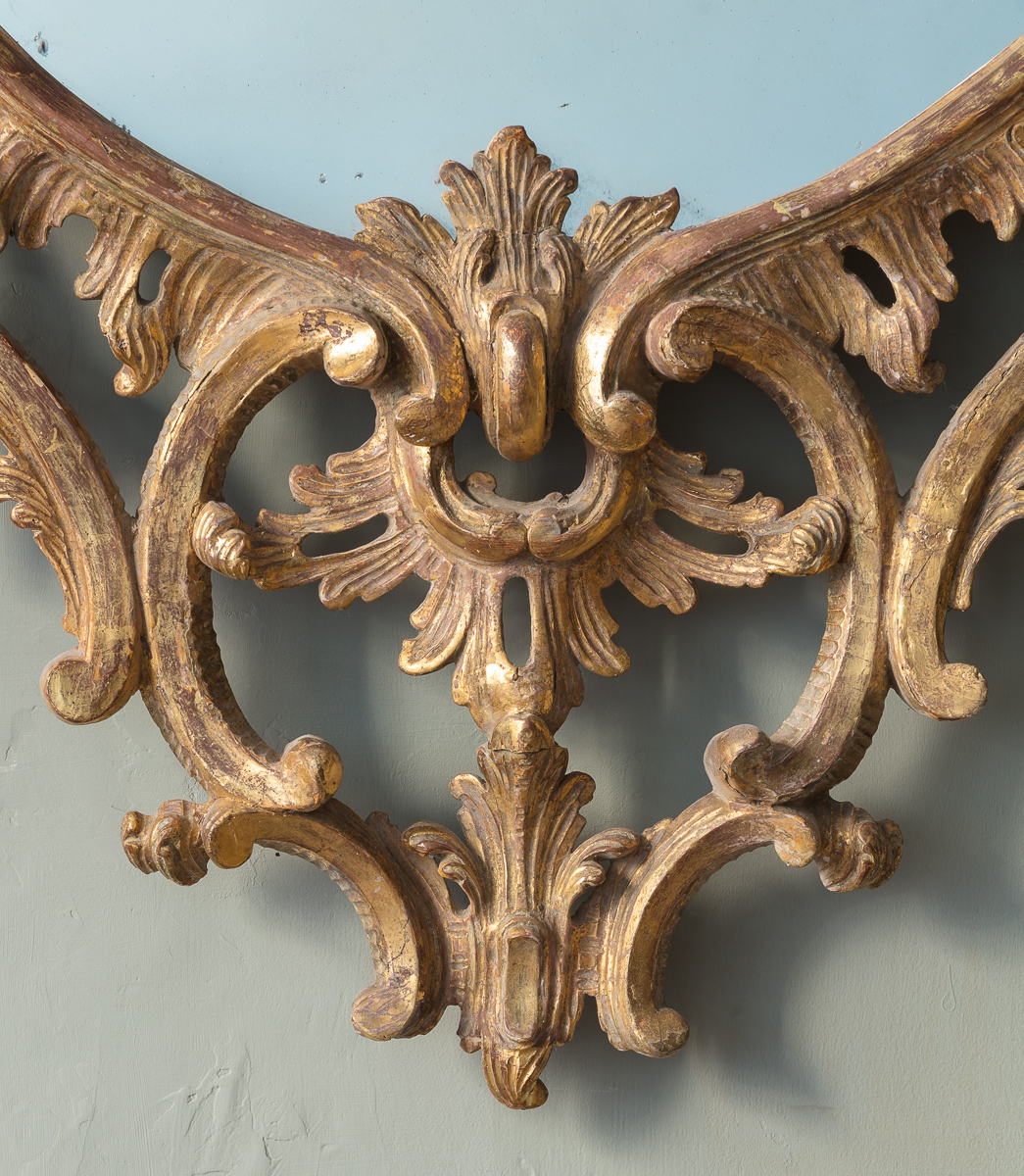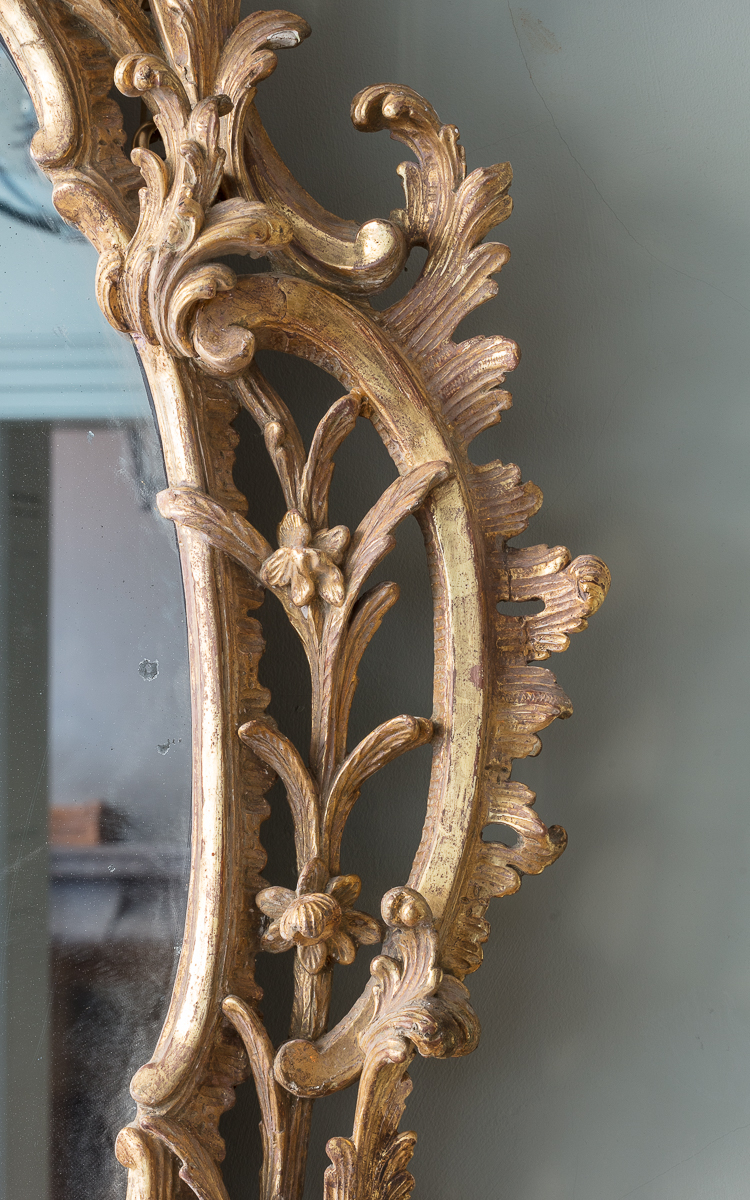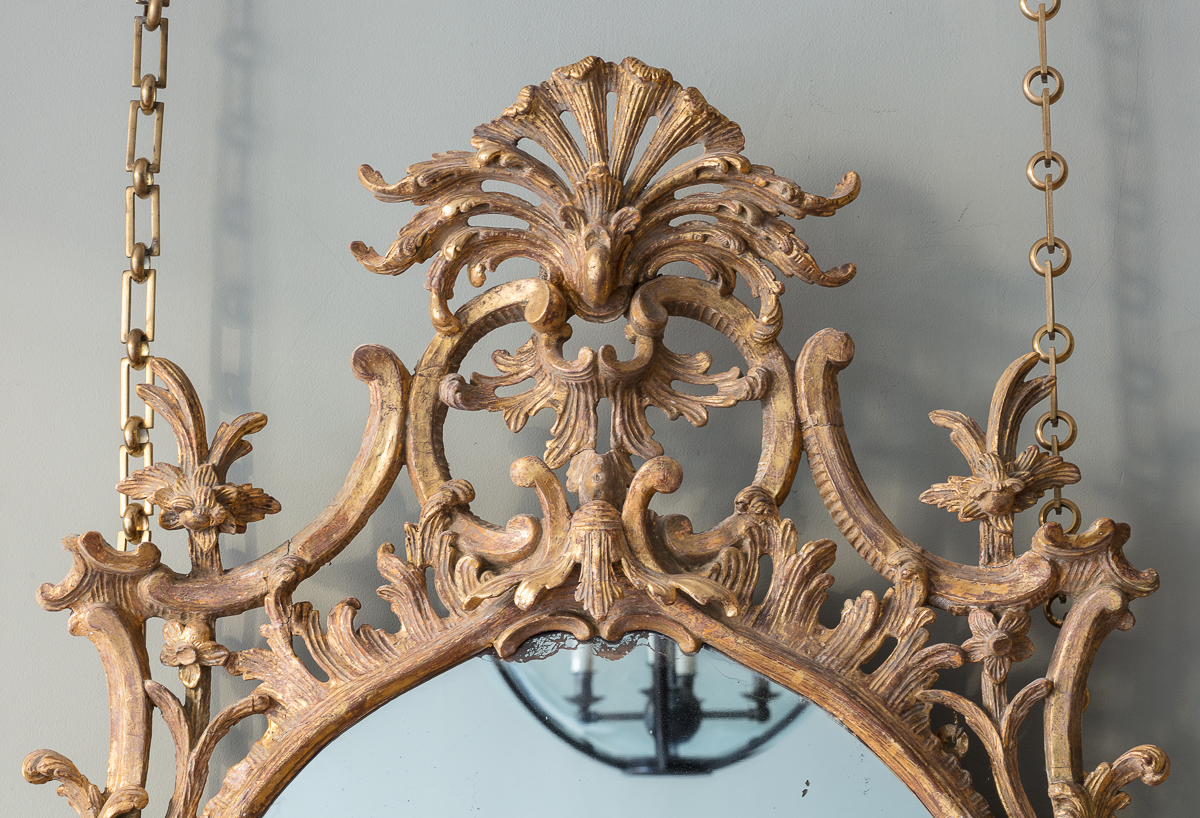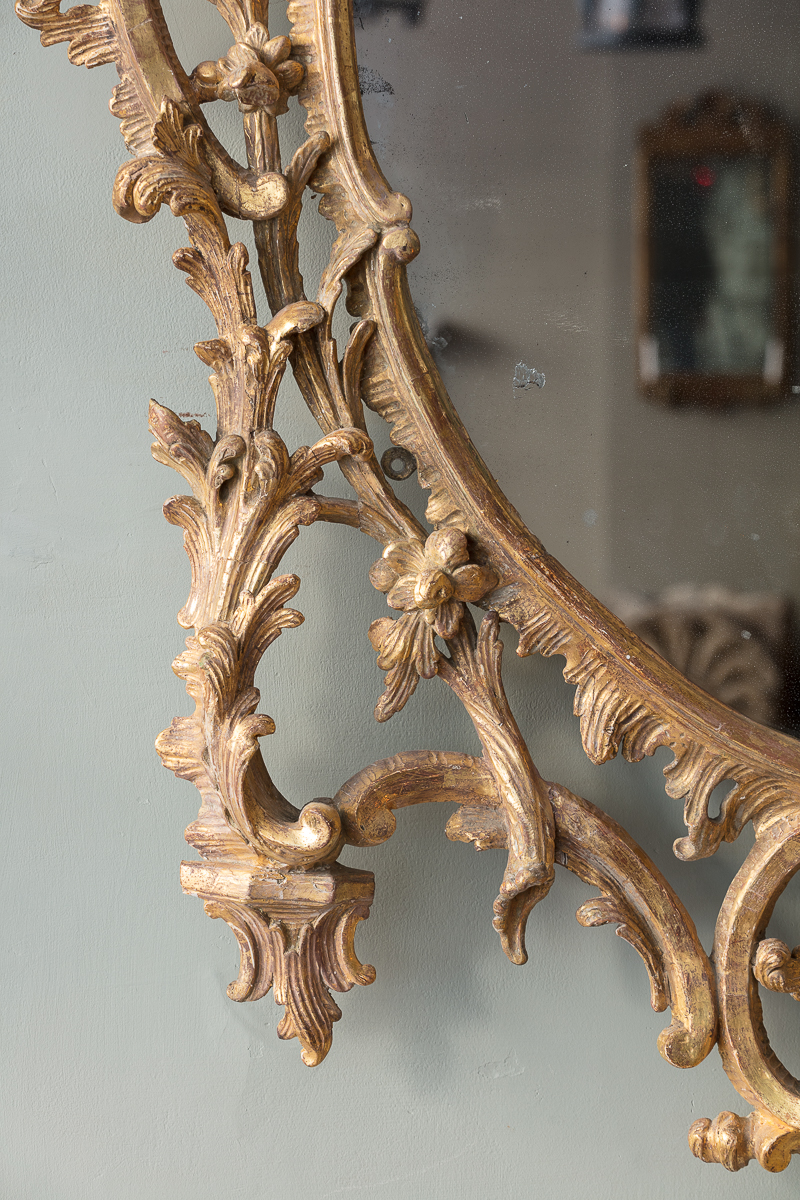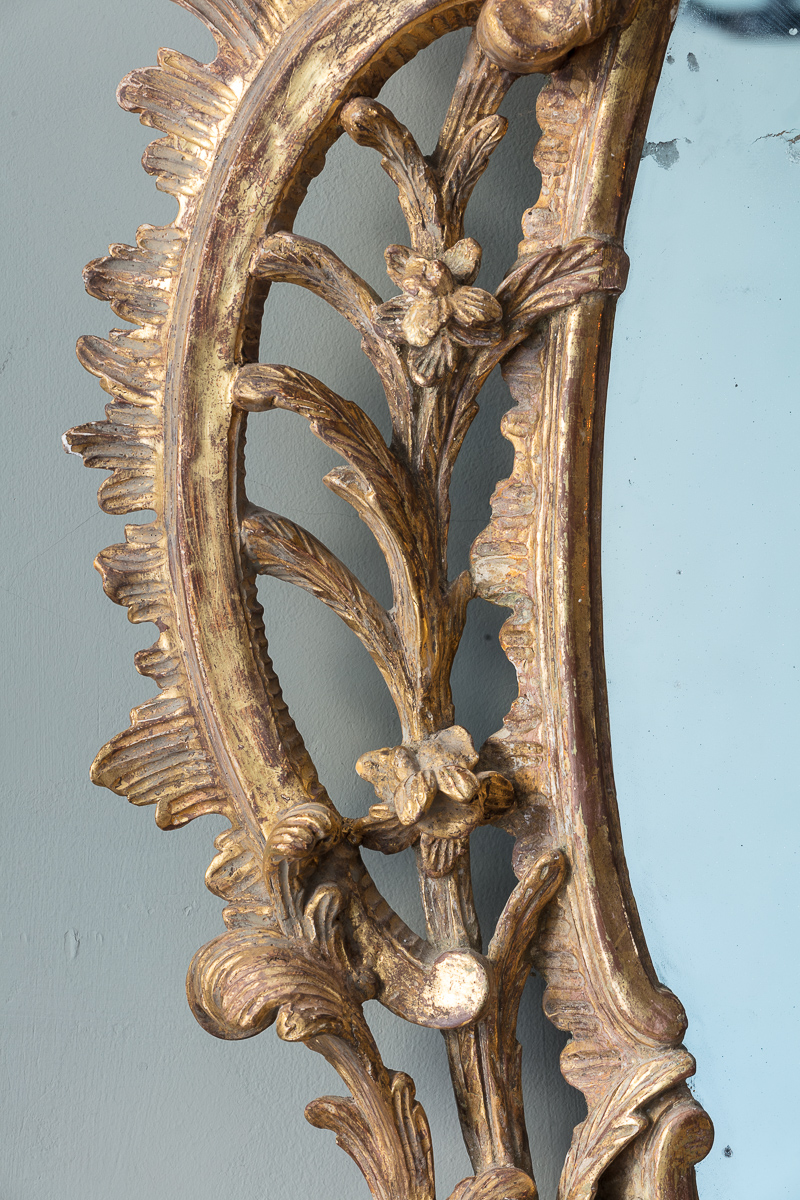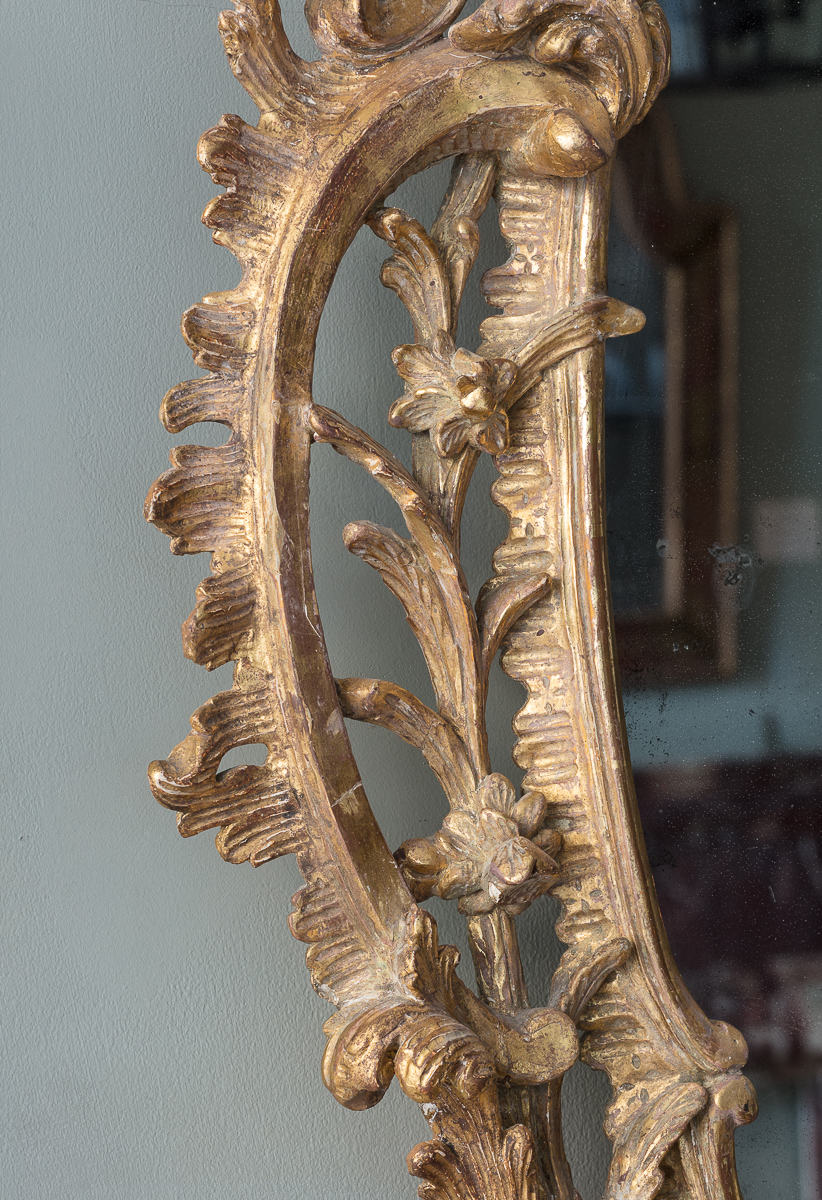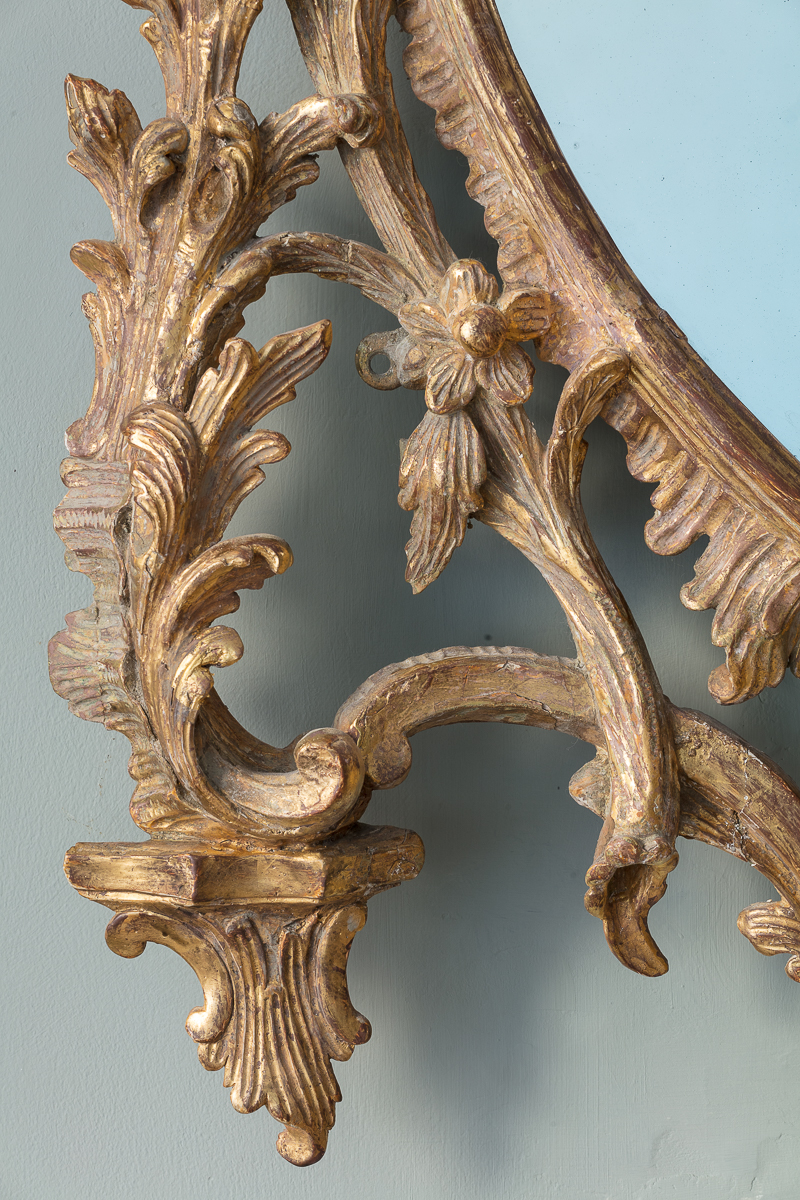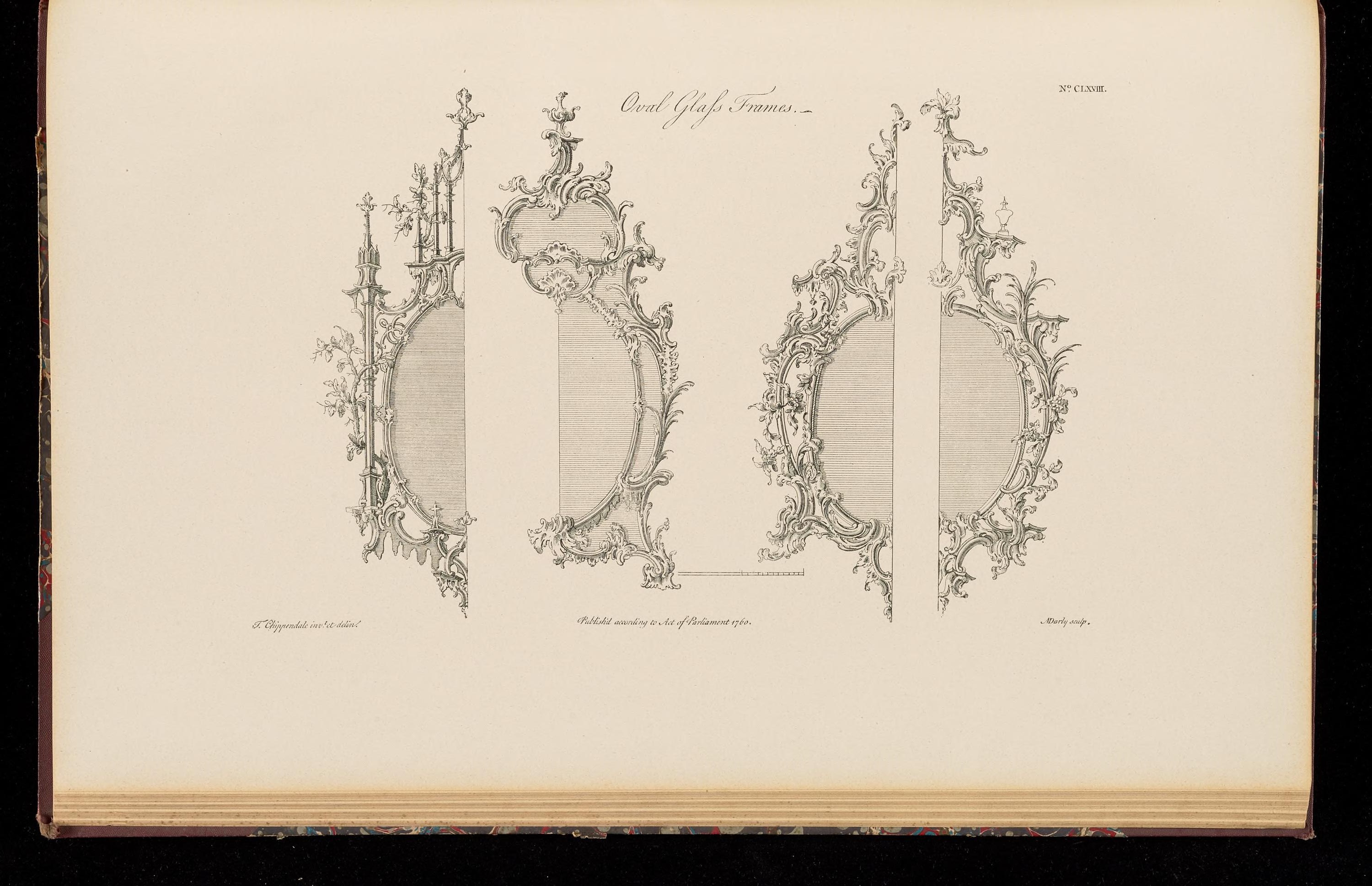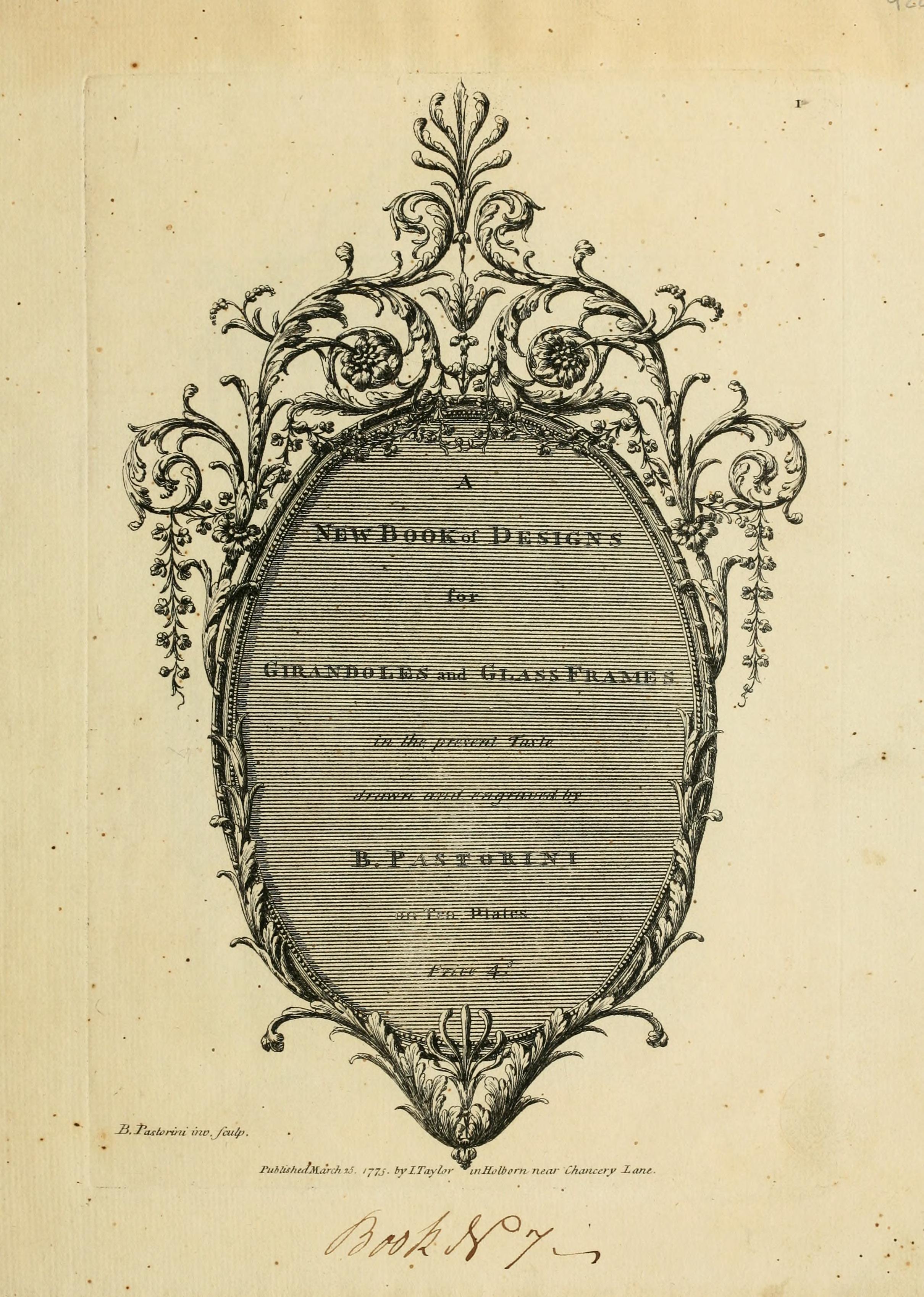A Pair of George III Giltwood Wall Mirrors, c.1780.
With extensive foliate and c scrolling details, with exceptional movement in the carving, carefully stripped back to reveal the original 18th Century gilt surface. With associated 19th century mercury silvered plates.
The movement in the carving has strong visual links with what might be described as the transitional period between the Rococo and the introduction of Neoclassicism. These exquisitely executed pair of mirrors retain all of the vitality associated with the English Rococo, alongside subtle indicators, such as their anthemion crestings and overall highly symmetrical form, that point towards the latter part of the 18th Century. This pair of mirrors take their fundamental inspiration from a series of designs published by Chippendale in the 1763 edition of his “Director”; and are particularly close in feeling to the third of the four designs illustrated here (photo included). Chippendale’s design incorporates the aforementioned asymmetrical cresting, as does a design by B. Pastorini in 1775 in his “A New Book of Designs” (photo also included).
It is clear that the workshop that produced these mirrors was extremely well established, with extensive experience in Rococo carving, allowing for a balanced and sophisticated carved Neoclassical form; visual attributes draw comparisons with the workshops of Linnell – Master craftsmen for much of the 18th century, the Linnell dynasty were based in Berkeley Square and were masters at combining elements of rococo and classicism, as is deftly exhibited in the form and design of this pair of mirrors.
Height: 154 cm, 60 5/8″
Width: 100 cm, 29 3/8″
£POA


